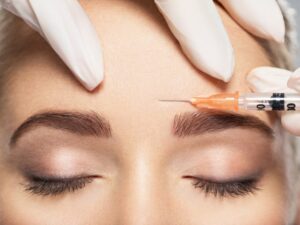
Today, BOTOX is one of the most recognized and widely used cosmetic treatments in the world, known for smoothing wrinkles and rejuvenating the face. But its origin story is surprisingly scientific, medical, and even a little dangerous. Understanding the history of BOTOX gives us a deeper appreciation for how a deadly toxin became a powerful tool in both cosmetic and therapeutic medicine.
The Discovery of Botulinum Toxin
The story of BOTOX begins in the late 1800s. In 1895, Belgian scientist Emile van Ermengem identified a bacterium called Clostridium botulinum as the source of a severe type of food poisoning known as botulism. This bacterium produces botulinum toxin, one of the most potent neurotoxins known to science. Even in tiny amounts, it can cause paralysis and death by blocking nerve signals to muscles.
For decades, scientists studied this powerful toxin primarily to understand and prevent botulism. However, its ability to temporarily paralyze muscles eventually sparked interest in the medical community as a potential treatment for certain muscular disorders.
BOTOX Enters the Medical Field
Fast forward to the 1970s, when Dr. Alan Scott, an ophthalmologist in San Francisco, began experimenting with botulinum toxin as a treatment for strabismus, a condition where the eyes are misaligned. He found that small, controlled doses could weaken overactive eye muscles and improve alignment. Dr. Scott referred to his formulation as Oculinum.
In 1989, the U.S. Food and Drug Administration (FDA) approved Oculinum for the treatment of strabismus and blepharospasm (uncontrollable blinking). Shortly after, the rights to the product were acquired by a pharmaceutical company called Allergan, which rebranded it as BOTOX.
The Cosmetic Revolution Begins
The cosmetic potential of BOTOX was discovered somewhat by accident. In the early 1990s, Canadian ophthalmologist Dr. Jean Carruthers and her husband, dermatologist Dr. Alastair Carruthers, noticed that patients being treated with BOTOX for eye spasms also had smoother, less wrinkled skin around the eyes. This observation led to clinical studies on the cosmetic effects of BOTOX, particularly for treating frown lines and forehead wrinkles.
In 2002, the FDA officially approved BOTOX for cosmetic use to temporarily improve the appearance of moderate to severe frown lines between the eyebrows. This marked a turning point, and BOTOX quickly became a household name, synonymous with anti-aging treatments.
Modern-Day Uses of BOTOX
Today, BOTOX is used far beyond the realm of cosmetics. It has been approved for treating chronic migraines, excessive sweating (hyperhidrosis), muscle stiffness, overactive bladder, and even depression in some studies. Its safety and effectiveness have made it one of the most versatile medications in modern medicine.
What began as a deadly bacterial toxin has evolved into one of the most successful medical and cosmetic breakthroughs in history. The journey of BOTOX, from food poisoning to facial rejuvenation, is a testament to the power of science and innovation. With new applications being discovered regularly, the story of BOTOX is far from over.
About the Author
Dr. Tony Lee is a graduate of the UMMC School of Dentistry. After graduating, he attended a rigorous general practice dental residency at University of Mississippi, helping strengthen his skills and further his knowledge. Dr. Lee has continued his education with coursework at the American Academy of Facial Esthetics, with a focus on TMJ and facial pain. Today, he is a member of the American Dental Association, the Florida Dental Association, and the Academy of General Dentistry. If you could use relief from jaw or facial pain or want to smooth out some wrinkles, our office can help! Schedule your appointment with us today online or call (904) 808-8779.
